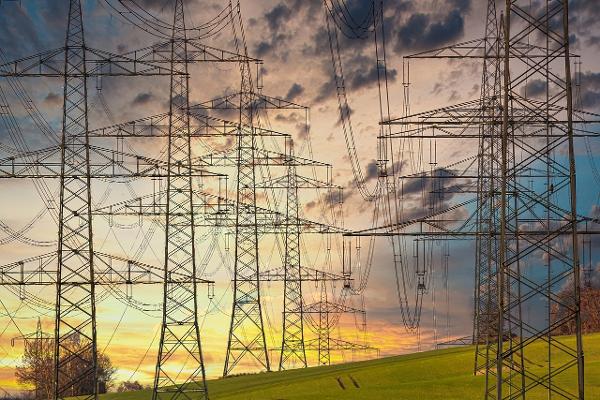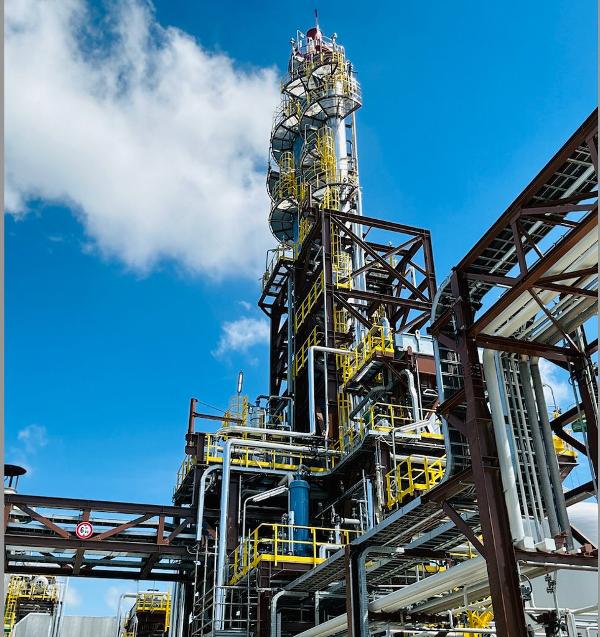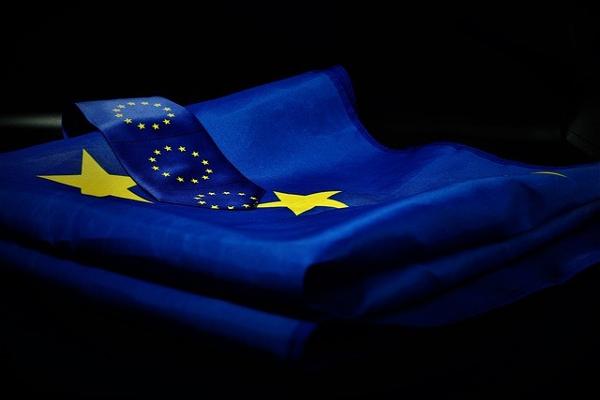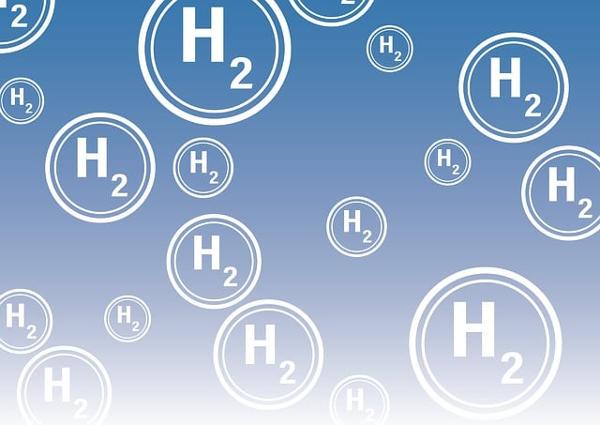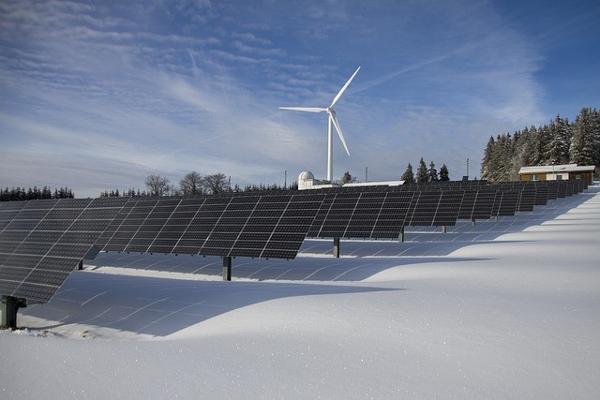Soon after the Biden administration announced a temporary pause on approvals for new liquified natural gas (LNG) export terminals on 26 January, Europe’s energy market braced itself for any potential negative impacts from the decision. Europe has endured serious crises in recent years. Whether caused by geopolitics, unexpected changes in the climate or even labour disputes, the same question has always been asked: Is this situation jeopardising the continent’s energy security? But the European energy sector keeps showing resilience while adapting to new circumstances.
Since 24 February 2022 and Russia's full-scale invasion of Ukraine, Europe’s energy situation has changed dramatically. In 2021, 41% of European Union (EU) gas imports came via pipeline from Russia, 40% from other pipeline suppliers and 19% from LNG—a mix that shifted from 2022. In May 2022, the European Commission launched its REPowerEU Plan to help the bloc save energy, boost renewables deployment and diversify its energy supplies. The EU realised that a reduction in fossil fuel dependency was necessary, alongside secure and diverse energy sources. After the implementation of REPowerEU, the energy supply mix changed. In 2022, 9% of EU gas imports came via pipeline from Russia, 40% from other pipeline suppliers and 41% from LNG. And in 2023, 41% of gas continued to be supplied by LNG imports, according to Kpler and Eurostat data.
European (defined in this analysis as the 27 member states of the EU, Norway, Türkiye and the UK) gas demand in the last two years has declined significantly, mainly due to REPowerEU policies, energy efficiency programmes, increases in renewable power generation, demand management and demand destruction. If the success of these policies and programmes continues, European gas demand in 2030 is expected to be below 400 billion cubic metres (bcm).
Europe’s gas demand (bcm)
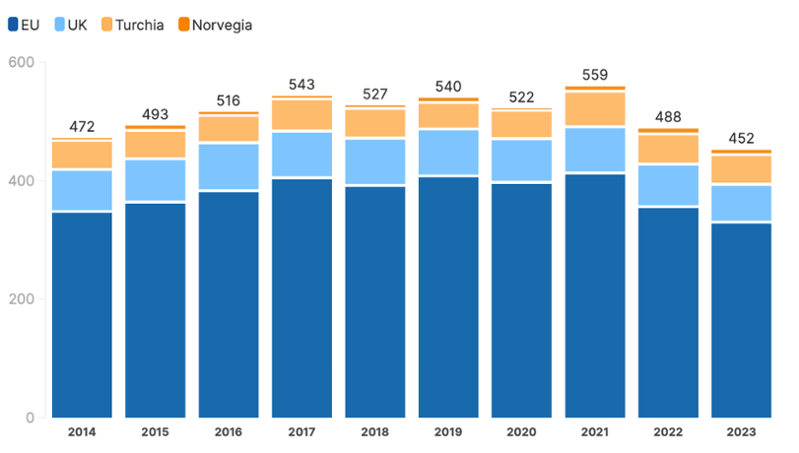
Source: Eurostat, UK Office for National Statistics, IEEFA
Besides reducing gas demand, Europe has put significant effort into diversifying the sources of its LNG imports. LNG imports have increased, but in 2023 they were below previous expectations. According to Kpler, Europe imported about 105 bcm of LNG in 2021, 167 bcm in 2022 and 167 bcm in 2023. The main sources of LNG imports to Europe are the U.S., Qatar, Russia, Algeria and Nigeria. Recent years have seen the U.S. be the top supplier of LNG to Europe, accounting for 28% of imports in 2021, 43% in 2022 and 46% in 2023.
LNG imports to Europe by source, 2021-2023
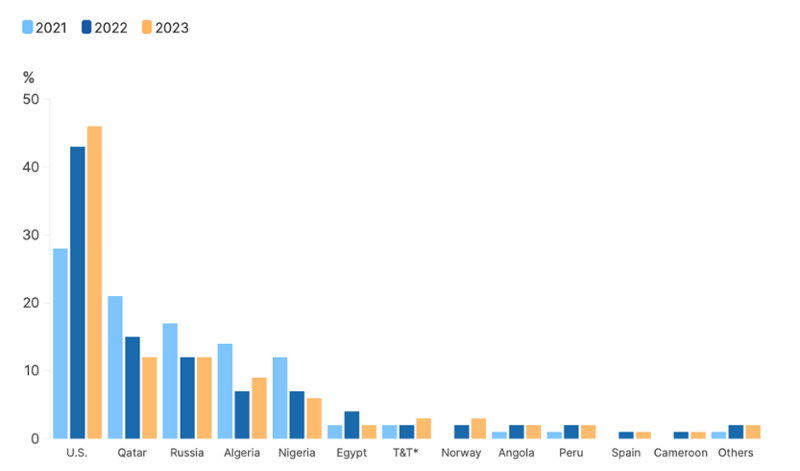
Note: T&T: Trinidad e Tobago
Source: Kpler, IEEFA
Volumes of U.S. LNG imported into Europe in 2023 increased 7% on 2022; assuming the same rise in the following years, the U.S. might be willing to supply 123 bcm of LNG to Europe in 2030, with the rest sourced from a variety of other countries to comply with the diversification of supply concept.
While Europe has been focusing on ways to reduce gas demand and, consequently, LNG demand, the U.S. has been increasing its LNG export capacity and is planning new terminals, according to S&P. Just taking into account the LNG terminals that are under currently construction, by 2030 U.S. export capacity will reach about 170 million tonnes per annum (mtpa), or equivalent to 238 bcm. This figure is 76% higher than Europe’s forecasted LNG demand of 98 mtpa (about 135 bcm) by 2030. And if all the proposed LNG terminals in the U.S. are built, by 2030 the country’s LNG export capacity will be about 337 mtpa (about 465 bcm), more than the whole of Europe’s forecasted gas demand of 284 mtpa (about 392 bcm).
Europe forecasted gas and LNG demand vs. US LNG capacity
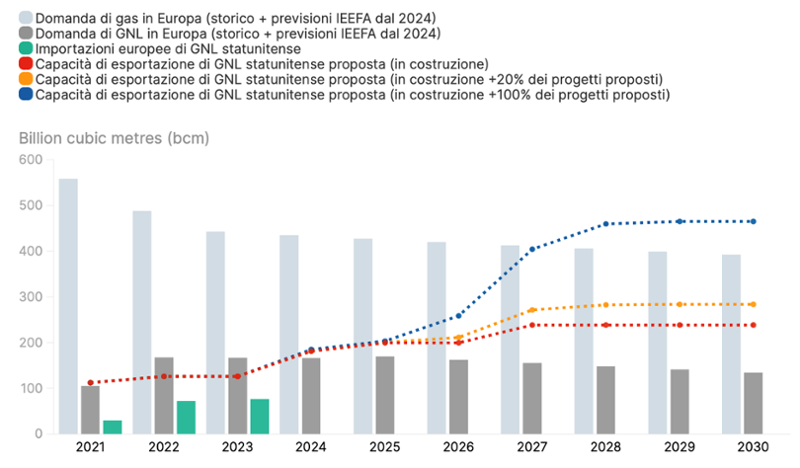
Note: “Europe” includes: EU 27, Uk, Turkey and Norway. USLNG export capacity according to S&P Global
Source: Kpler, IEEFA, S&P Global
Once again, European energy security has been used to justify the construction of both LNG export and import terminals. Most of those projects were considered emergency measures to supply gas to a Europe faced with an energy crisis as Russian gas supplies declined. However, thanks to Europe’s quick response, the crisis so far has been controlled, but the continent can’t rest on its laurels and should continue with efforts to reduce gas consumption, diversify sources of gas imports and increase renewables. Now is the time to reevaluate the proposed LNG projects to reduce the risk of overinvestment.












